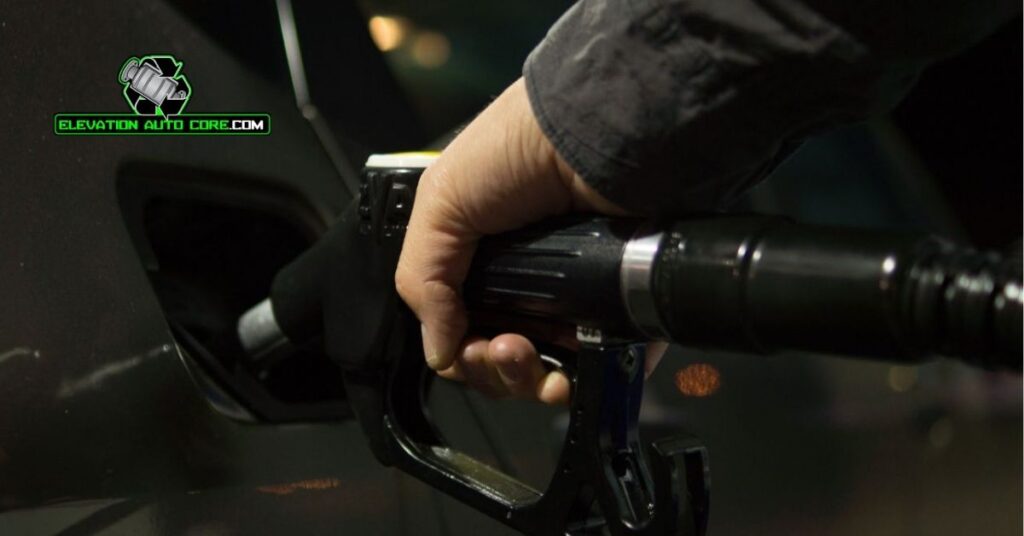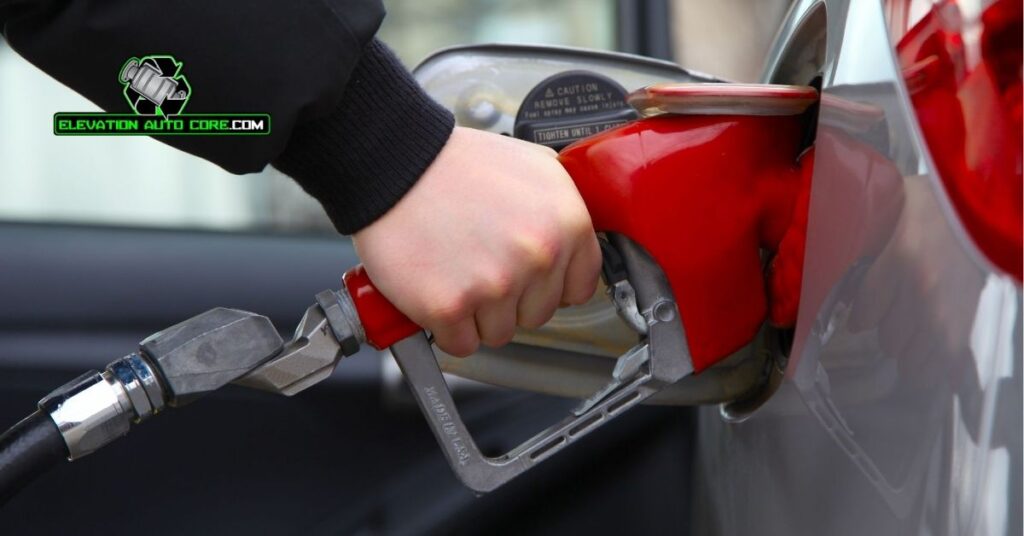Ever wondered how your car acts when you get bad gas? Poor-quality fuel can wreak havoc on your vehicle, causing everything from rough idling to engine misfires. Spotting these signs early could save you costly repairs—keep reading to learn what to watch for.
- car
- bad gas
- poor-quality fuel
- rough idling
- engine misfires
- vehicle
Signs Your Car Has Bad Gas

Contaminated or low-quality fuel can cause various problems for your car. Recognizing these signs quickly can help address the issue before it leads to costly repairs.
Difficulty Starting the Engine
Starting your car may take longer than usual when bad gas is present. The contaminated fuel disrupts the ignition process, resulting in delayed or failed starts. Persistent issues like repeated cranking may indicate fuel contamination.
Reduced Engine Performance
Engine power often decreases with poor-quality fuel. You might notice sluggish acceleration or difficulty maintaining speed. Bad gas affects fuel combustion efficiency, leading to inconsistent or weak performance.
Unusual Sounds or Knocking
Strange noises may arise from your car’s engine. Contaminated fuel often triggers knocking or pinging sounds during operation. These noises occur when improper combustion impacts engine timing or internal components.
Stalling or Misfiring
Stalling incidents increase when your car struggles with bad gas. The disrupted fuel flow or incomplete combustion interrupts engine cycles, causing random misfires or sudden stalls. Ignoring frequent misfires could worsen engine damage over time.
Causes Of Bad Gas Issues

Bad gas in your car can lead to several performance problems. Understanding the root causes helps identify and fix these issues effectively.
Contaminated Fuel
Fuel contamination occurs when foreign particles enter the gas supply. Debris, dirt, or rust from storage tanks often mixes with gasoline. This debris clogs fuel injectors, disrupts combustion, and significantly reduces engine performance. Stations with poorly maintained fuel storage tanks are common sources of contaminated gas.
Water in the Gas Tank
Water frequently ends up in the gas tank through condensation or faulty storage. Even small quantities of water can cause engine stalling or misfires because gasoline and water don’t mix properly. Cold weather exacerbates this issue as water freezes and blocks fuel lines. Contaminated gas from moisture-prone tanks increases this risk.
Expired or Old Gasoline
Gasoline deteriorates over time, causing it to lose flammability and efficiency. If fuel sits in storage or a vehicle tank for several months, it oxidizes and forms gum-like deposits. These deposits impair fuel flow and engine functionality. Vehicles left unused for long periods are more prone to this issue without proper storage precautions.
Diagnosing Bad Gas Problems
Identifying issues caused by bad gas ensures that you address the problem before it worsens. Spotting these issues involves examining your car’s behavior and testing exact components for signs of contamination or deterioration.
Checking Engine Warning Signs
Engine warning lights often activate when bad gas interferes with performance. Poor-quality fuel can trigger sensors monitoring misfires, emissions, or combustion efficiency. Listen for unusual knocking or pinging sounds, as these are common when contaminated gas disrupts normal engine operation. Pay attention to sudden stalling, reduced acceleration, or an irregular idle, since all may signal underlying fuel quality issues.
Testing Fuel Quality
Using a clear container helps verify the presence of contaminants in your fuel. After carefully siphoning a small sample from your gas tank, inspect the liquid for separation, discoloration, or debris. Water contamination appears as distinct layers, with water settling beneath the gasoline. If discoloration or particulate matter is evident, it supports the likelihood of bad gas. When in doubt, seeking testing at a repair shop or using fuel-testing kits available online ensures accurate analysis.
Inspecting the Fuel System
Start with your fuel filter, as clogs or dirt buildup indicate foreign particles from contaminated gasoline. Examine fuel injectors for blockages that could restrict flow, causing uneven combustion. Rust inside or near the fuel tank signals water contamination, which often leads to corrosion. Leaks, worn seals, or disconnected lines within the fuel delivery system further confirm potential bad gas problems, disrupting normal engine operation.
Fixing Bad Gas in Your Car

Addressing bad gas quickly helps prevent further damage to your engine. Resolving the issue involves key steps to restore fuel quality and improve vehicle performance.
Draining and Replacing Fuel
Start by removing the contaminated gasoline from your tank to stop further adverse effects. Use a siphon pump or get your vehicle towed to a service center for professional removal. Refill the tank with high-quality fuel from a reliable source. This ensures clean combustion and reduces the risk of clogging or engine misfires.
Adding Fuel Additives
Incorporate fuel additives to improve the condition of remaining gasoline and clean the fuel system. Use water-removing additives if your gas is contaminated with moisture. Other additives can dissolve gum deposits or improve fuel combustion, restoring engine efficiency. Only use additives approved for your vehicle to avoid unintended side effects.
Seeking Professional Help
Consult a mechanic if issues persist or if the problem escalates. Technicians can inspect the fuel system and resolve blockages, clean injectors, or replace damaged components. Professional diagnostic tools allow for thorough evaluation, helping to address underlying causes linked to contaminated fuel.
Preventing Bad Gas in the Future

Taking proactive steps can help you avoid poor-quality fuel and the issues it creates. Focus on reliable practices to maintain your car’s performance and protect its fuel system.
Choosing Quality Fuel Stations
Select gas stations known for consistent quality. Nationally recognized brands often maintain higher fuel standards and clean storage systems. Look for stations that receive frequent deliveries because fresh fuel reduces the likelihood of contamination or water buildup. Avoid refueling when a station’s tank is being refilled, as sediment from the storage tanks may mix into the gasoline.
Regular Maintenance Tips
Inspect your car’s fuel filter during routine maintenance. Replacing a clogged filter ensures clean fuel reaches your engine. Consider scheduling periodic checks of your fuel injectors because buildup from contaminants can reduce efficiency. Use fuel system cleaners occasionally to dissolve deposits and improve combustion. Always follow your vehicle manufacturer’s recommendations for added reliability.
Storing Gasoline Properly
Use approved, sealed containers if storing gasoline for longer than a few weeks. Keep the storage area cool and dry because extreme temperatures and moisture can degrade fuel quality. Add stabilizers to the gasoline to preserve its flammability and prevent gum formation. Avoid storing fuel in your vehicle for extended periods unless driving it regularly to keep the fuel fresh and effective.
Conclusion
Bad gas can wreak havoc on your car’s performance and lead to costly repairs if left unaddressed. Staying attentive to warning signs and addressing issues promptly can save you time, money, and frustration. By using high-quality fuel, maintaining your vehicle’s fuel system, and following proper storage practices, you can significantly reduce the risk of fuel-related problems. Taking these precautions ensures your car runs smoothly and efficiently for the long haul.

